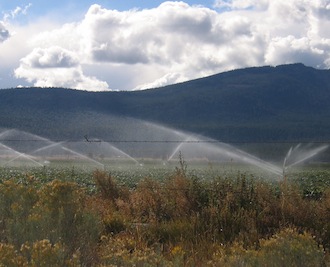Allocations cut back on major water projects

Given the forecast for the final week of February, now it really is down to a “March Miracle” to salvage the California water season.
So this time they didn’t even wait for the next snow survey. Water managers are pulling back on estimates of how much water they’ll deliver to contractors on major water projects. With winter precipitation running about half of normal, today the California managers set probably deliveries at half of what contractors (mostly irrigation districts) on the State Water Project are asking for — that’s ratcheted down from 60%.
Likewise the federal Bureau of Reclamation announced some skimpy allocations for its Central Valley Project, with some pegged as low as 30% of requests.
So how dry are we? Officials at the state Department of Water Resources sum it up this way:
Water Year (October 1-September 30) runoff from rain and snow is forecasted to be far below average in both the Sacramento River and San Joaquin River systems. The median runoff forecast of 9.4 million acre-feet for the Sacramento River system would be the 16th driest in 106 years. The February 1 median water year runoff forecast of 3.2 million acre-feet for the San Joaquin River system would be the 21st driest in 111 years. Average runoff is 18.3 million acre-feet for the Sacramento system, and 5.9 million acre-feet for the San Joaquin.
The good news is that major reservoirs around the state are still hovering at about their normal levels for this time of year, thanks to a sustained soaking last winter. But with scant expectations for what remains of this winter, that “carry-over” will have to bail out the state this summer.
One thought on “California, Feds Ratcheting Back on Farm Water”
Comments are closed.

This drought will be tough on salmon in our rivers too. Let’s hope water managers are allowed to keep following the science, keep needed flows for salmon in our rivers. If they do, our California and Oregon fishermen will continue to have jobs and bring in millions of pounds of wild salmon each year.